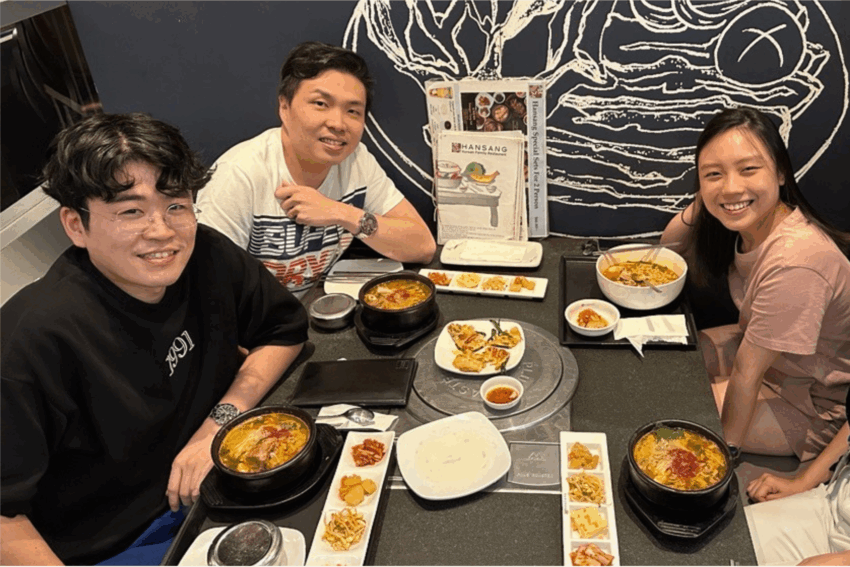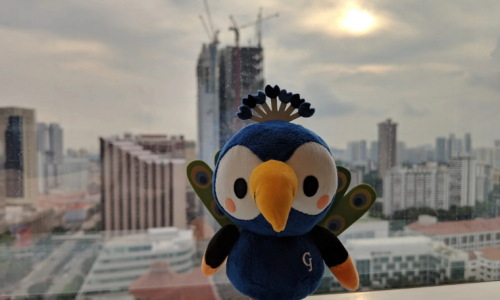Written by: Gabriel Chua
Edited by: Destiny Goh
In a globalised business landscape, cultural diversity is more than a buzzword—it’s a strategic advantage. For companies like Good Job Creations (GJC), navigating the cultural nuances between Japan and Southeast Asia has unlocked new levels of collaboration and innovation. By blending Japanese dedication with Singaporean pragmatism, GJC has transformed cultural differences into a cornerstone of their success.
When Kota, a senior Business Development Executive, first moved to Singapore, cultural differences made him rethink his client engagement approach. Accustomed to the Japanese emphasis on holding clients in high esteem, he struggled with his local team’s varied perspectives. Yet, observing his Singaporean colleagues – drawing on their diverse cultural backgrounds – skillfully building partnerships based on mutual trust and realistic expectations broadened Kota’s understanding. This fusion of Japanese dedication with local pragmatism resolved early challenges and ultimately forged stronger client relationships, demonstrating how diverse cultural intelligence became a key driver of business success.
This scenario—one we’ve encountered countless times at Good Job Creations (GJC)—illustrates why diversity is more than a corporate value but a strategic advantage that drives business success in Southeast Asia.
Japanese companies moving into Southeast Asia often hit a big hurdle: the cultural gap between Japanese and the region’s business practices. At Good Job Creations (GJC), we’ve spent more than a decade making this challenge a strength. A 2019 McKinsey research concluded companies with greater cultural diversity were 36% more profitable than those with low diversity.
My tenure at GJC began a decade ago; I started as a Consultant in 2014 and worked my way up, and in 2020, I was promoted to General Manager.
Being on the leadership team has given me a vantage point of the transformative power and the experience to tackle the inevitable challenges of building and leading diverse teams.
In teams from Japan and Singapore, communication is the biggest challenge. In Singapore, people often prefer directness in the workplace. In contrast, Japanese communication is typically more indirect and subtle. For example, Japanese employees tend to place greater importance on context, where the message’s meaning depends on the situation and type of relationship between the communicators to prevent conflict and preserve work harmony. This causes misunderstandings as some may misinterpret their intentions and misread body language. These issues often arise from different views on ‘right’ or respectful communication. At GJC, our solution to this is to show, not just tell, and it begins with the management and leaders practising open communication or dialogue during work settings, creating a ripple effect for the rest to follow.
On one occasion, our team of Consultants and Business Development personnel encountered an issue that resulted in disagreements while working on a project; after much digging, we realised the root cause was differing expectations and misinterpretations. To resolve this effectively, we appointed a neutral third party—an experienced leader who has worked with Japanese and locals and understands the nuances of both cultures.
As a result, both parties reached a sustainable agreement through the suggested alternatives provided to solve the problem amicably.
In Singapore, the business culture often emphasises direct communication and efficient decision-making. Using clear and simple language is important. Building relationships is still key, but the pace of business and solving problems can be quicker than in Japan. The Japanese value punctuality as a sign of respect, but the locals are more flexible with autonomy.
One of our Japanese team members was used to the informal, behind-the-scenes consensus-building process often practised by Japanese businesses [根回し: nemawashi]. Before making an official business decision, our members will engage in light-hearted informal meetings to understand our client’s business nature and needs. That’s why he found it surprising how fast Singaporean clients made their decisions. He later said, ‘I found that Singaporean businesses value careful planning. They often focus on being efficient and making quick decisions.’ Adapting to this more direct approach has been crucial to our success here.
Cultural immersion builds genuine relationships and provides direct insights into cultural norms. This includes ideas like maintaining a harmonious relationship and the need to maintain [面目を保つ: menboku wo tamotsu] in Japanese business. Despite cultural differences, our members complement each other. Our Japanese members are known for being meticulous and detailed and are often complemented by our Singaporean members’ efficiency and speed, leading to high-quality and on-time deliveries.
The shared value of hierarchy in Japanese and Singaporean cultures manifests in distinct yet strategically advantageous ways. The deep respect for seniority in Japanese culture ensures decisions are rooted in experience and a long-term vision. While respecting seniority, Singaporean culture fosters a more open dialogue where junior team members feel empowered to contribute creative solutions.
This creates a dynamic where Japanese professionals can gain exposure to diverse perspectives and agile thinking.
At the same time, Singaporean juniors benefit from the guidance and stability provided by a clear hierarchical framework, ultimately leading to more robust and well-rounded outcomes.
Leaders who advocate harmonious cultural diversity have seen its power, and to realise its power, they must help their organisation see what it can do for them. When people are curious about something (cultural and different business etiquettes), they remember details better. At GJC, ‘fun’ at work is important to us; it makes learning interesting. We involve members by appointing key people to plan interesting activities to encourage mingling between the multicultural teams. One of them came up with the idea of group lunches.
This informal setting allowed members to have honest, heartfelt conversations that bridged the cultural gap. Some claimed to have ironed out their differences and become open to accepting their nuances because they understood each other better. Members will then summarise interesting points from these group lunches and share them on GJC’s shared network.
For formal settings, direct reporting managers host one-on-one monthly meetings that let members discuss or give feedback on their learning points working within multicultural teams. This safe space encourages our members to share their challenges and areas where they need help. If the problem is unresolved, managers are responsible for proposing the best solutions. At GJC, we also encourage members to progressively learn through trial and error.
Our managers are well-equipped with knowledge and have experience leading multicultural teams.
We entrusted them with the responsibility to advocate for harmonious collaboration by educating both cultures and helping our members understand, respect, and adopt different business etiquette.
The diversity of our team at GJC is a unique selling point. It helped us reach many regional and global clients. We tailor our approaches to fit each market’s culture, and our industry insights and cultural knowledge support this.
‘The diversity of our team at GJC is a unique selling point. It helped us reach many regional and global clients.’
‘Failure to embrace cultural diversity limits business opportunities and makes attracting and retaining top talent from various cultural backgrounds difficult.’
Some individuals had differing perspectives on how things should be done, despite both having the same goal. When neither chooses to compromise, it results in a productivity decline and leads to a project delay.
Cultural diversity will continue to challenge traditional management practices. Leaders must adopt a more joint and tailored approach, and that is to lead by example. For example, they should challenge biases between cultures to bridge cultural gaps and exercise flexibility when managing diverse teams. Encourage dialogue by creating forums so employees feel comfortable sharing their perspectives.
Leaders should embrace different perspectives when making decisions. Having more options helps us make better choices and plan before we act. Strong corporate cultures value a clear mission, vision, and core values. The Japanese idea of continuous improvement values culture, teamwork, and growth.

Gabriel Chua
Gabriel Chua is the General Manager at Good Job Creations. He has over a decade of recruitment experience since 2011. His expertise lies in Sales and Marketing within the FMCG/Services sectors, where he has a proven track record of consistent success and progressive leadership since 2015.






